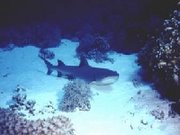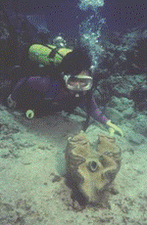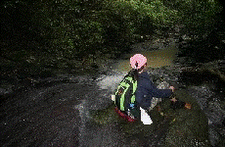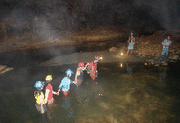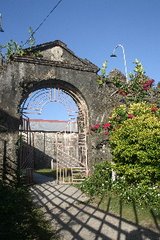
From ME magazine January 2006
I am more of a seasoned diver than a spelunker, but an invitation to a caving expedition in Cagayan was too great to resist. After all, Cagayan is known for its more than 300 caves, most of which are still unexplored. After being told that we will be entering wet caves, I took my wet suit, fins and buoyancy compensator along with my caving hat and explorer lights. Feeling like a cross between a diver and a mountaineer, I joined a team for an adventure to the caves of Baggao.
It is famous for Blue Water and Duba cave systems, two unconnected caves that present their own challenges. It was the middle of summer and yet Blue Water is very wet, and we had to do a lot of swimming and crawling through gushing water. In the first main chamber is a waterfall that drains into a huge lake. The team measured the depth in the middle of the lake with a depth sounder – it measured seven meters or 24 feet. The water was cold but refreshing – the kind of cold that stings the skin but does not penetrate the bones.

With fins on, my companions and I swam across the dark water towards a waterfall – better than having to scramble across slippery rocks and boulders along the edge of the lake. As we got closer, the force of the water pushed us back such that we had to swim diagonally across the flow to get to the water’s edge. The waterfall drop was not high and we managed to climb up to the top. Stalactites adorn the ceiling and interesting formations lined the tunnel like sculptures in a gallery. Crystals embedded in the rocks sparkled when light was shone on them.

A deep cut on the rocky terrain shows the power of water to shape and mold hard rocks formed millions of years ago. The subterranean river, which runs across the cave system creating sumps, tubs, streams and waterfalls, was such an enchanting sight, and the sound of gushing water reverberated across the long corridor. I can only imagine how much water drains out through this cave during the rainy months. Some chambers must get cut off due to flooding.

Blue Water is a newly discovered cave system and it presents many opportunities for exploration. The water is indeed blue and flows out through the mouth and into a lovely river. Several mini waterfalls and pools fringed with beautiful ferns and exotic plants line the river, making the hike a photographic delight.
In Duba, the challenge was to crawl through a small hole against a strong surge of water in order to get to the next open chamber. At one point, I had to hold my breath and grasp a rope to avoid being washed away by the current. It was an adrenaline pumping experience, to say the least.

Before heading back to Manila, we stopped over at Peñablanca, a mere 30 minutes drive from the provincial capital, Tuguegarao. It is accessible by well-paved roads and offers lodging facilities. Blessed with numerous cave systems, 4,136 hectares in Peñablanca were declared Protected Landscape in 1992. There are 378 caves in the area and only 75 had been documented by the National Museum in 1977.
Considered a spelunker’s haven, Peñablanca offers caving at various levels of difficulty, from simple day explorations to multi-day extreme caving. Callao is the best known and developed, and is a popular tourist destination. Of its seven chambers, three have dramatic natural skylights. A chapel was even built by the local folks in one of its chambers.
Callao is enormous in size, but is not challenging as Sierra, where I had to belly-crawl through a 7.5 meter wormhole called Celica’s Passage. The beautiful speleothem and speleogems are all worth the effort. But the guide told us that Odessa, Jackpot and San Carlos caves are even more difficult. Shafts and drafts mean serious roping and rappelling. They are all flood-prone and require a lot of swimming through passages, sumps, lakes and cascades. Odessa-Tumbali measures 12.6 kilometers and is said to be the third longest cave system in the country. San Carlos is considered the most technical, and one of the most challenging in the Philippines. A subterranean river runs through it and there are a lot of tight spaces that require crawling – not the place for claustrophobes.
As my friends and I relaxed along the banks of the Pinacanauan River, thousands of hungry bat flew in pulsating formations from the safety of the cliff-top caves to feed in the forest. To witness the circadian flight was the perfect finale to a week-long exploration of some of the country’s most beautiful cave systems. I have barely scratched the surface, and I am eager to return for more exciting explorations and wonderful discoveries.





